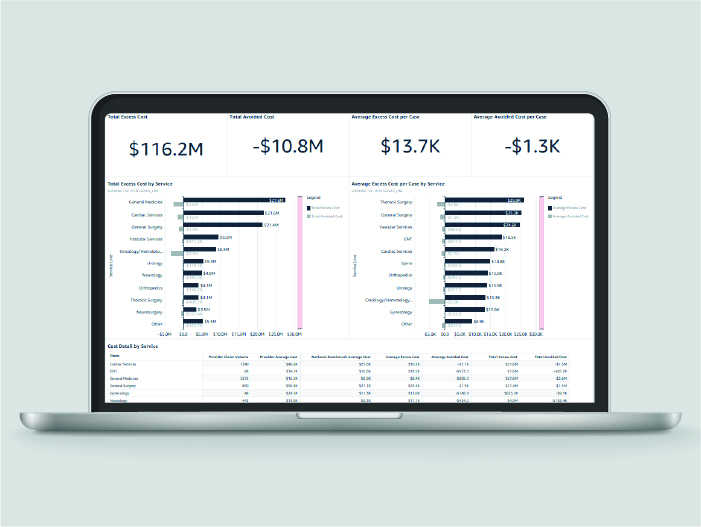Auto logout in seconds.
Continue LogoutAccording to a new report from HHS' Office of Inspector General (OIG), hospitals are overlooking almost half of Medicare patient harm events, many of which are not investigated or reported to the government as they should be.
Hospitals miss almost half of patient harm events
The new report builds on an earlier OIG investigation, which looked into 770 Medicare patients who were discharged from the hospital in October 2018. Among these patients, 299 experienced harm events.
Using surveys about 266 of the harm events, which were returned by 154 hospitals in 2023, OIG found that 49% of the harm events were not included in a hospital's incident reporting and surveillance systems. It was also unclear whether another 16% of these harm events were captured.
According to hospital staff, they did not record many of these harm events because they did not consider the event to be harm (46% of missed events) or because it was not standard practice to record them (18% of missed events). In its report, OIG found that hospitals often "applied narrow definitions of harm," which led to certain events being overlooked.
"When hospitals fail to identify and report harm events to the appropriate oversight entities, they stymie independent feedback needed to take corrective actions," OIG wrote. "The lack of such actions hampers system-level improvements that can prevent future harm from occurring."
The report also found that hospitals were as likely to miss more severe adverse events as temporary harm events and were more likely to miss harm events due to surgeries or procedures. Teaching hospitals also often missed more harm events compared to non-teaching hospitals, which OIG said could be due to the fact that teaching hospitals provide more complex care.
Of the 94 harm events that were captured by hospitals' systems, 54% were flagged in a review of medical records, and 40% were flagged by a real-time patient monitoring system. However, OIG found that only 17 events out of 48 with sufficient information were investigated by the hospital to identify potential causes of the event. Of these 17 events, only 11 led to patient safety improvements or process changes, such as enhanced monitoring or staff training.
"When hospitals opted not to conduct investigations, they cited reasons similar to those for not capturing events—they believed that the harm events were not preventable; the cause was immediately known and remediated; or they considered the harm events to be known complications, side effects, or risks of treatment and therefore understood and even expected," OIG wrote.
Advisory Board's QUALITY-RELATED RESOURCES
OIG recommendations
In the report, OIG also outlined three recommendations for federal agencies, their partners, surveyors, and states to help better identify and reduce patient harm events:
1. Standardize definitions of harm events
In the report, OIG recommended that the Agency for Healthcare Research and Quality (AHRQ) and CMS lead a national effort to create standardized definitions of patient harm across the healthcare industry. OIG also recommended the agencies work with federal partners and other relevant organizations to create a taxonomy of patient harm.
"By aligning these definitions, AHRQ and CMS would be supporting hospitals' efforts to capture harm and would facilitate greater communication about the incidence of harm and safety practices within facilities and across the medical community," OIG wrote.
2. Have surveyors assess compliance with Medicare quality programs
In 2023, CMS released new interpretive guidance for surveyors on how to assess hospitals' compliance with the Medicare Quality Assurance and Performance Improvement (QAPI) requirement.
OIG recommended CMS take steps to ensure surveyors prioritize the QAPI requirement when they assess hospitals and hold them accountable for complying with the requirement. CMS should also encourage surveyors to adopt the new guidance for assessing hospitals' QAPI programs and use its oversight to ensure that surveyors are assessing hospital compliance with the requirement effectively.
3. Assist hospitals with incident reporting systems
Finally, OIG recommended CMS provide further guidance to Quality Improvement Organizations (QIOs) to help them determine whether hospitals captured harm events in their incident reporting or other surveillance systems. If hospitals are not capturing harm events, QIOs can help identify and address any potential weaknesses in the reporting systems.
CMS' guidance should also direct QIOs to assess whether hospitals investigated harm events and escalate the situation to hospital governing boards if appropriate. "This could help hospitals identify and mitigate barriers to making quality and safety improvements within their own systems," OIG wrote.
(Early, Modern Healthcare, 7/29; Muoio, Fierce Healthcare, 7/30; OIG report, accessed 7/30)
The case for system-wide care variation reduction
By Isis Monteiro and Mahaya Walker
The recent HHS OIG report on patient harm events underscores the importance of adopting a system-level approach to designing and implementing care standards. Specifically, a system-wide commitment to care variation reduction (CVR) can help standardize processes, align staff on harm event reporting, and ultimately prevent harm events from occurring. CVR can also be applied to address many other quality, safety, and cost challenges faced by health systems.
Historically, systems have struggled to achieve system-wide standardization because it requires executive commitment and investments to build foundational capabilities and infrastructure. Taking a system-wide approach to standardization is especially critical now given policy shifts that will impact health systems' finances amid structural shifts to the operating environment. To get ahead of these changes, health systems should prioritize strategies that can simultaneously improve quality, decrease costs, and support long-term business objectives — all of which are possible through CVR.
Best in class systems typically establish a CVR governance structure that accounts for regional and local nuances when designing care standards, while also factoring in the workflows of clinicians who will put those standards into practice. Additionally, these systems offer centralized education, training, and implementation support to ensure consistent adoption and adherence to care standards across all facilities. The first steps toward improving patient safety and quality (while also supporting other business objectives) through system-level CVR is securing executive commitment and ensuring that health systems are well positioned to achieve their goals at scale.
Don't miss out on the latest Advisory Board insights
Create your free account to access 1 resource, including the latest research and webinars.
Want access without creating an account?
You have 1 free members-only resource remaining this month.
1 free members-only resources remaining
1 free members-only resources remaining
You've reached your limit of free insights
Become a member to access all of Advisory Board's resources, events, and experts
Never miss out on the latest innovative health care content tailored to you.
Benefits include:
You've reached your limit of free insights
Become a member to access all of Advisory Board's resources, events, and experts
Never miss out on the latest innovative health care content tailored to you.
Benefits include:
This content is available through your Curated Research partnership with Advisory Board. Click on ‘view this resource’ to read the full piece
Email ask@advisory.com to learn more
Click on ‘Become a Member’ to learn about the benefits of a Full-Access partnership with Advisory Board
Never miss out on the latest innovative health care content tailored to you.
Benefits Include:
This is for members only. Learn more.
Click on ‘Become a Member’ to learn about the benefits of a Full-Access partnership with Advisory Board
Never miss out on the latest innovative health care content tailored to you.

